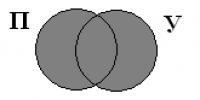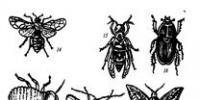Achinsk Pedagogical College distance learning by correspondence. History of the creation of the Achinsk Pedagogical College
teacher training college training
At the beginning of the twenties of the last century in Siberia there were 12 pedagogical colleges, which graduated on average 260-350 people per year. This number of teachers was clearly not enough to quickly solve the problem of eliminating illiteracy and creating teaching staff in the young Soviet state.
One of the most important reasons for the opening of a pedagogical college in Achinsk was the difficult situation with teaching staff in the country and in the Krasnoyarsk Territory, in particular.
In September 1907, the construction department of the Yenisei provincial administration reviewed and approved a project to build a girls’ gymnasium in the city of Achinsk. The author of the project was Vladimir Aleksandrovich Sokolovsky, one of the leading architects of the city of Achinsk.
At the end of the 1920s, intensive preparations began everywhere for the introduction of universal compulsory primary education in the country. The Achinsk Pedagogical College, designed for a three-year course of study, was designed to solve this problem.
The question of opening the Achinsk Pedagogical College was raised at both the first and second district congresses of Soviets, but lack of finance did not allow it to open, although permission was received. And only on May 18, 1928, at a meeting of the large presidium of the Achinsk district executive committee, the final decision was made to open a pedagogical college in the city of Achinsk from the beginning of 1928-1929 school year. In the building of the former teachers' seminary, located in the old teacher training college building. This building was built according to the design of the famous Krasnoyarsk architect Mikhail Aleksandrovich Sokolovsky in 1912 for a girls’ gymnasium and has its own history.
The opening of the pedagogical college was a great event in the cultural life of our small city.
In the first year of operation, the technical school had two groups of first-year students and one group of second-year students with a total of 121 people. The first-year groups were staffed by graduates of seven-year schools, and teachers were accepted into the second year primary classes who have worked at school for several years, but have not completed secondary school teacher education, as well as several people who graduated from 8th grade of secondary schools.
The service area of the technical school included 9 districts: Achinsky, Berezovsky, Birilyussky, Bogotolsky, Kozulsky, Nazarovsky, Tyukhtetsky, Uzhursky, Tyazhinsky.
The Achinsk district department of public education sent me to work at a pedagogical college large group well-trained and passionate teachers.
In May 1930, the first graduation of primary school teachers trained by the Achinsk Pedagogical College took place. A total of 36 people were released. Among them is the future Honorary Citizen of Achinsk S.I. Poplavsky.
1931-1937 (8) - the technical school also had departments: Russian language and foreign languages (German and Latgalian).
Since the opening of the technical school, training and retraining courses for teachers and educators have been held annually (monthly, three-month, six-month and one-year).
College management, teaching staff and public organizations made a lot of efforts to create the necessary conditions for the successful study of students from the first days of the pedagogical technical school.
In 1936, the technical school received the status of a pedagogical school. About three hundred students study in the school and preschool departments. Correspondence education was introduced, sports sections and clubs were opened. A team of teachers led by director I.A. Meikshan raised a worthy generation of graduates.
During the war years, a hospital was located in the school building. After its disbandment, teachers and the entire staff quickly created all the conditions for teaching and educating students. Having eliminated traces of the war years in the school building, the teaching staff began to solve new problems put forward by life itself.
From 1949 to 1956 On the basis of the pedagogical school there was a teacher's institute with two faculties: physics and mathematics and Russian language and literature. The institute trained teaching staff for eight-year schools.
60s - 70s were marked by an improvement in the material base, a transition to a desk-based teaching system, and a flourishing of artistic independence.
The school had equipped classrooms, many of them were equipped with televisions, movie cameras, tape recorders, and players. A large amount of didactic educational and visual material allowed students to prepare for trial classes, lessons, and extracurricular activities.
Great work to improve pedagogical excellence conducted a methodological room where meetings were held methodological advice, pedagogical readings, recommendations for planning and implementation were developed methodological work at school. In the office, material was accumulated from the experience of the teaching staff in various issues training and education.
The status of a pedagogical college was obtained in 1995 in connection with the transition to multi-stage specialist training for schools within the framework of continuing education. Over the past two decades, the teaching staff has implemented the idea of a pedagogical complex: lyceum (pedagogical college, pre-university preparation) - I level higher education(pedagogical college) - subsequent steps in the Lesosibirsk Pedagogical Institute, Krasnoyarsk state university and Krasnoyarsk State Pedagogical University.
Today, for public education, the college prepares:
· teachers of Russian language and literature basic secondary school;
· foreign language teachers of primary and secondary schools;
· primary school teachers with additional training - raising children preschool age;
· computer science teachers of secondary schools;
· teachers of primary classes and primary classes of compensatory and correctional and developmental education;
· social work specialists.
The correspondence department trains specialists:
· on state and municipal administration;
· social work;
· on preschool education;
· on documentation support of management and archival science;
On the basis of the pedagogical college there are:
· Interregional Law College of the Siberian Federal University;
· Branch of the State Educational Institution of Higher Professional Education "Krasnoyarsk State Pedagogical University them. V.P. Astafieva."
The Scientific and Methodological Council unites five departments and the PCC of Foreign Languages.
· two language laboratories;
· cable TV;
· Interdistrict resource center.
The student newspaper "Pooh" is published. There are: voluntary youth organization "Evolution", clubs and studios for the interests of students - art studio, drama studio "SKENA", philharmonic society, dance studio "AVE", folk ensemble "Skomoroshenka", sports clubs and sections.
Achinsk Pedagogical College is the Krasnoyarsk regional state educational institution of secondary vocational education, one of the oldest educational institutions.
The college was founded in 1928 as a pedagogical college. Initially, it was designed for a three-year course of study and was designed to train personnel for the introduction of universal compulsory primary education in the country.
In the first year of operation, the technical school had two groups of first-year students and one group of second-year students, with a total of 121 students. The first-year groups were staffed by graduates of seven-year schools, and the second year included primary school teachers who had worked at school for several years but did not have completed secondary pedagogical education, as well as several people who had completed eight grades high school. The technical school's service area included nine districts: Achinsky, Berezovsky, Birilyussky, Bogotolsky, Kozulsky, Nazarovsky, Tyukhtetsky, Uzhursky, Tyazhinsky.
Georgy Dmitrievich Ivannikov (taught social studies and political economy) was appointed director of the technical school, and Konstantin Leontyevich Demidov (taught Russian language and literature) was appointed head teacher.
From the first day of the creation of the technical school, for a number of years, Z. D. Zhibinova - teacher of pedagogy and psychology, V. I. Kozlova - teacher of natural science, V. M. Brinkman - teacher of physics and mathematics, Kulvanovsky - teacher of chemistry, Samkovich - worked there for a number of years. physical education teacher (initials not established), A. Yu. Tsukunft - plumbing teacher, P. I. Svechikhin - carpentry and cardboard teacher. They also taught private methods in their subjects.
Since 1929, V.N. Akatov began working as the head teacher, teaching pedagogy and supervising the pedagogical practice of students. The following departments were opened at the technical school: school (trained primary school teachers), preschool (trained teachers to work in orphanages and kindergartens), department of the children's communist movement (trained pioneer leaders), extramural, which covered a large number of teachers primary school and preschool workers.
In 1936, the technical school received the status of a pedagogical school. About 300 students study in the school and preschool departments. Correspondence education was introduced, sports sections and clubs were opened.
During the Great Patriotic War many teachers and students volunteered to defend the Motherland, and a hospital was located in the school building. After its disbandment, teachers and the entire staff quickly created all the conditions for teaching and educating students. Having eliminated the consequences of the war years in the school building, the teaching staff began to solve new problems put forward by life itself.
From 1949 to 1956, a teacher’s institute was opened on the basis of the school, training teachers of the Russian language and literature, mathematics, and physics. In 1995, the school became a college.
College majors
- Social work
- Physical Culture
- Preschool education
- Teaching in primary school
- Corrective pedagogy in primary education
Indicate the word in which the letter E is written in the blank space
Exercise 1 of 5smiling
well done...well done
merciful
dress..tse
Check NextIn one of the words below, an error was made in the placement of stress: the letter denoting the stressed vowel sound was highlighted incorrectly. Find this word
Exercise 2 out of 5having understood
hired
open
intention
Check NextPlace all punctuation marks: indicate the number(s) in whose place(s) there should be a comma(s) in the sentence. In 1894, the Literary and Theater Museum (2) was founded in Moscow (1) which (4) was made up of a collection on the history of Russian and Western European theater by A.A. Bakhrushin.
Exercise 3 out of 53
1
4
2
Check NextTransition of the Russian economy to market relations identified some problems that can be attributed to general condition Russian system education and to vocational school. Rapidly changing market conditions; its uneven saturation: a shortage of some specialists with an excess of others; unstable demand for specialists from employers; liquidation government regulation labor market and distribution of graduates; increased competition due to an increase in the number of non-state educational institutions And...
Share your work on social networks
If this work does not suit you, at the bottom of the page there is a list of similar works. You can also use the search button
Other similar works that may interest you.vshm> |
|||
| 15580. | Development of creative abilities of students of a pedagogical college by means of creating an exhibition space | 74.07 KB | |
| Independent work of students should become one of the foundations of the educational process for them. This requires a problem taken from real life familiar and significant for the student, to solve which he needs to apply the acquired knowledge and new knowledge that has yet to be acquired. Issues related to organizing art exhibitions include developing the idea and structure of the exhibition; activities of the exhibition committee or other structure of an individual dealing with organizational issues; receiving the patronage of respected and... | |||
| 5191. | The history of the creation of the activities of the FBI and CIA | 20.48 KB | |
| The Bureau of Investigation, which gradually took over this role, the predecessor of the current FBI, was created only in 1908. At first, the FBI dealt only with civil and criminal cases. But with the outbreak of the Second World War, Roosevelt assigned the FBI its previous responsibilities of fighting espionage and sabotage and preventing coup attempts. | |||
| 21605. | History of the creation and adoption of the US Constitution | 17.61 KB | |
| History of the creation and adoption of the US Constitution. When choosing a topic for writing my work, I was interested in the topic concerning the creation and adoption of the US Constitution. It seems to me very important in the introduction of my work to pay some attention to another very important document which was the predecessor of the future US Constitution. | |||
| 19947. | The history of the creation of the SOPKA HEROES memorial | 20.89 KB | |
| Reading collected material, I came to the conclusion that only memory and gratitude help people accomplish difficult things. The Crimean region has been healing the wounds of war for many years. And now, in the fields where the battles took place, you can find cartridge cases, half-decayed shell boxes, and soldiers’ helmets. | |||
| 1582. | Google - the history of creating a global brand | 258.62 KB | |
| The invention of Google technology can be compared to the invention of the wheel. Today, with the passage of time, it is unclear how it was possible to search the Internet before the advent of Google. Like everything ingenious search system Google is a very simple thing. | |||
| 9712. | DEVELOPMENT OF CREATIVE ABILITIES OF PEDAGOR COLLEGE STUDENTS BY MEANS OF CREATING AN EXHIBITION SPACE (BY THE EXAMPLE OF CREATING AN ART EXHIBITION) | 75.43 KB | |
| The history of a modern art exhibition. Object this study are art exhibitions the subject of research are historical sources containing information about their organization. Issues related to organizing art exhibitions include developing the idea and structure of the exhibition; activities of the exhibition committee or other structure of an individual dealing with organizational issues; receiving the patronage of respected and famous persons; selection of exhibition participants; selection of exhibits; restoration of exhibits... | |||
| 20182. | Designing a database for a full-time college | 2.59 MB | |
| Database design for full-time college Completed by: student gr. IN course work The task is to develop a database project to accumulate the necessary information in the organization; to create and populate the database. The database should be designed taking into account the implementation of various types of queries to obtain information. When designing a database, the possibility of issuing a paper report should be taken into account. | |||
| 15708. | Creation of a mobile application for the Ugresha College for the iOS operating system | 12.18 MB | |
| The purpose of this work is to develop an application for iOS OS whose purpose will be access to information from Ugresha College. To achieve this goal, it is necessary to solve the following tasks: Conduct a review of domestic and foreign literature on the chosen topic; Study the architecture of tools and features of application development for iOS... | |||
| 18305. | Organization of extracurricular independent work of college students using distance technologies | 127.72 KB | |
| Performance general characteristics remote technologies as an integral part of new information technologies, used in modern domestic education and consideration of the possibility of their use for organizing extracurricular independent work students in educational institutions secondary vocational education; | |||
| 5741. | Changing the attitude of first-year medical college students to smoking through the organization of preventive work | 3.8 MB | |
| Today, the prevalence of tobacco smoking in our country is one of the highest, with 60 male smokers and 15 female smokers. At the same time, in last years There is a clear trend towards earlier smoking initiation among young people. | |||
License of the Main Directorate of Education of the Administration of the Krasnoyarsk Territory
A No. 137609, registration No. 319 dated May 17, 2004,
state certificate accreditation series 24 No. 000002, reg. No. 2 dated 02/05/2007
Provides training based on 11 classes in the following specialties:
050301 Russian language and literature (full-time);
050709 Teaching in primary school (full-time);
050719 Corrective pedagogy in primary education (full-time);
040101 Social work (full-time, part-time);
050202 Computer Science (full-time);
050303 Foreign language(English, face-to-face);
080504 State and municipal government(in absentia);
050704 Preschool education (correspondence);
080113 Insurance business (by industry) (in absentia);
032002 Documentation support management and archival science (correspondence);
050702 Organization of educational activities (full-time, part-time);
Education levels: basic, advanced. Students with secondary or higher professional education, the opportunity to receive education in a shortened time is provided.
The material and technical base of the college allows for distance learning.
They work in college preparatory courses for students in grades 10 and 11(full-time and part-time forms) in Russian language, literature, mathematics, history, English language. Time: October-July.
Unified State Examination results are accepted.



